The Enermax Revolution D.F. X 1050W PSU Review: High Power, Highly Reliable
by E. Fylladitakis on November 9, 2023 8:00 AM EST- Posted in
- Cases/Cooling/PSUs
- PSUs
- 80Plus Gold
- Enermax
- ATX v3.0
- 12VHPWR
- SANR
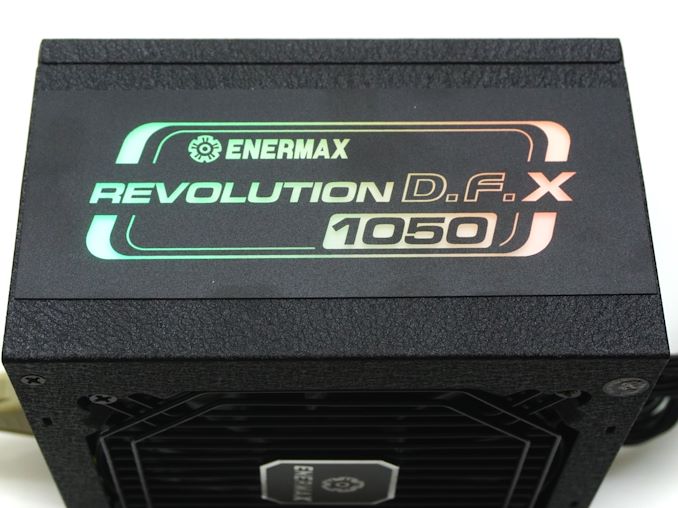
In the realm of power supply units (PSUs), a few names stand out for their dedication to quality, innovation, and performance. Enermax, established in 1990, has been a stalwart in this sector, consistently delivering products that resonate well with both enthusiasts and professionals. The brand has a rich history of coupling robust engineering with aesthetic finesse, which has, over the decades, carved out a significant market share in the fiercely competitive PSU arena.
Venturing into the high-capacity spectrum, Enermax has thrown its hat into the ring with the Revolution D.F. X 1050 PSU, a unit that boasts a plethora of features. The PSU market at this wattage level is a battlefield where the stakes are high, and the margin for error is minuscule. Products contending in this segment are expected to meet the stringent demands of high-performance computing environments, including multiple high-power PCIe card setups and extensive overclocking scenarios. The Revolution D.F. X 1050 is Enermax's statement of intent, showcasing its technical prowess and its ability to meet the needs of power users alongside a unique aesthetic design.
The Revolution D.F. X 1050 comes with a promise of delivering not just ample power, but also operational efficiency, durability, and a host of smart features to ensure optimum performance. The patented DFR (Dust Free Rotation) technology, for instance, is a notable inclusion aimed at reducing dust accumulation, supposedly prolonging the unit’s lifespan and ensuring consistent performance. As we delve deeper into the analysis of the Enermax Revolution D.F. X 1050 PSU, we shall scrutinize every facet of this unit to ascertain whether it lives up to the lofty standards set by its predecessors and the expectations synonymous with the Enermax brand name.
| Enermax Revolution D.F. X 1050W Power specifications ( Rated @ 40 °C ) |
|||||
| RAIL | +3.3V | +5V | +12V | +5Vsb | -12V |
| MAX OUTPUT | 20A | 20A | 87.5A | 3A | 0.3A |
| 130W | 1050W | 15W | 3.6W | ||
| TOTAL | 1050W | ||||
| AC INPUT | 100 - 240 VAC, 50 - 60 Hz | ||||
| MSRP | $150 | ||||
Packaging and Bundle
We received the Enermax Revolution D.F. X 1050 PSU in a fairly large cardboard box with thick, sturdy walls. Inside the box, the PSU is additionally protected inside packaging foam. The black/red artwork on the box is focused on the unit itself.
Enermax kept the bundled items down to the bare minimum, with an AC power cable, four mounting screws, just two simple cable ties, a colorful sticker, and a 24-pin connector jumper that can be used to power on the PSU without connecting it to a motherboard.
The modular cables of the Revolution D.F. X 1050 PSU are all black, with ribbon-like linked black wires and black connectors. This includes the 12VHPWR cables of the unit. There is also an extra optional cable for connecting the internal ARGB to an external controller or compatible motherboard.
| Enermax Revolution D.F. X 1050 | ||
| Connector type | Hardwired | Modular |
| ATX 24 Pin | - | 1 |
| EPS 4+4 Pin | - | 2 |
| EPS 8 Pin | - | - |
| PCI-E 5.0 | - | 1 |
| PCI-E 8 Pin | - | 4 |
| SATA | - | 12 |
| Molex | - | 6 |
| Floppy | - | 1 |
The Enermax Revolution D.F. X 1050 PSU
External Appearance
Enermax has managed to encapsulate a substantial power output within the Revolution D.F. X 1050 PSU, all while adhering to the standard ATX dimensions of 150 × 140 × 86 mm (W×D×H). This meticulous design ensures the unit's compatibility across a vast array of ATX-compliant enclosures, encompassing Desktop HTPC and other compact configurations. The vital electrical specifications and certifications are neatly displayed on a sticker atop the unit.
Straying from the minimalist design approach, the Revolution D.F. X 1050 PSU flaunts a unique aesthetic charm. It is sprayed with textured black paint and showcases a distinctive octagonal fan grill located at the base of the chassis, which is elegantly adorned with a badge at its center. The right side of the chassis is completely plain, while the left side is home to what initially appears to be a typical decorative sticker with the company and series logos.
What initially appears to be a simple decorative sticker is actually a frosted display that illuminates various colors and effects, adding a visually appealing aspect for users who appreciate RGB setups. The Enermax Revolution D.F. X 1050 PSU offers 14 built-in lighting modes, providing a range of color and effect options including various static colors and dynamic rainbow effects. The lighting is limited to the side display, making it subtle and elegantly applied.
On the rear side, besides the customary small on/off switch and AC cable receptacle, the Revolution D.F. X 1050 incorporates a square momentary switch on its rear side. This switch rotates the pre-programmed RGB effects if the unit is not connected to an external ARGB controller and also allows users to easily turn off the lighting by holding it down for three seconds.
The front of the chassis houses connectors for the modular cables. Although the connectors are not color-coded, a basic legend is imprinted on the chassis to facilitate correct cable connections. The PCI Express and CPU 12V cables employ identical connectors, eliminating the risk of incorrect cable insertion, thanks to the distinct connector designs and keyed configurations.
Internal Design
Enermax is using one of their own brand PFERS-12Μ fans for the cooling needs of the Revolution D.F. X 1050, the maximum size of fan that fits in a standard ATX chassis is 120 mm. It is a very high-quality fan, with a dual ball bearing 6-pole engine. Ball-bearing engines are very reliable but not the quietest, however the PSU features a semi-passive design that will completely stop the fan while the load is low. Enermax also programmed a “Dust-Free Rotation” mode into the fan, which has the fan making a powerful reverse spin once it is powered on, supposedly blowing away any accumulated dust. This will not be of much use for systems that are on 24/7 and it is likely that the fan will simply draw the dust back towards it after that momentary reverse spin, yet it could help in some cases and very dusty environments.
Although the platform may be initially mistaken for a Great Wall design, the OEM behind the creation of the Enermax Revolution D.F. X 1050 actually is Dongguan SANR Electronic Technology (also known as Casecom). SANR is a large Chinese OEM but we rarely find their platforms in high-end products. Even though the chassis was reduced to just 140 mm, the internals of the PSU are not as packed as we thought they would be.
The filtering stage begins at the rear of the AC receptacle and continues onto the main PCB, with a total of four Y capacitors, two X capacitors, and two filtering inductors. Some of the capacitors are soldered directly on the prongs of the AC receptacle, without an additional support PCB. There are two bridge rectifiers that share the same heatsink with all of the active power components up to the main transformer.
Rubycon supplies the two 450V/390μF capacitors of the APFC stage, which are placed next to a single large filtering inductor. The active PCF components are two CWS60R125AZ power transistors and a diode. Two MOSFETs form a typical synchronous half-bridge LLC inversion stage towards the main transformer.
Six 014N04SA MOSFETs generate the single 12V line on the other side of the transformer. The DC-to-DC converters for the 5V and 3.3V voltage lines can be seen right after a very small heatsink. The secondary side capacitors are a mix of Rubycon, Nippon Chemi-Con, and Nichicon products, all of which are from Japanese manufacturers.


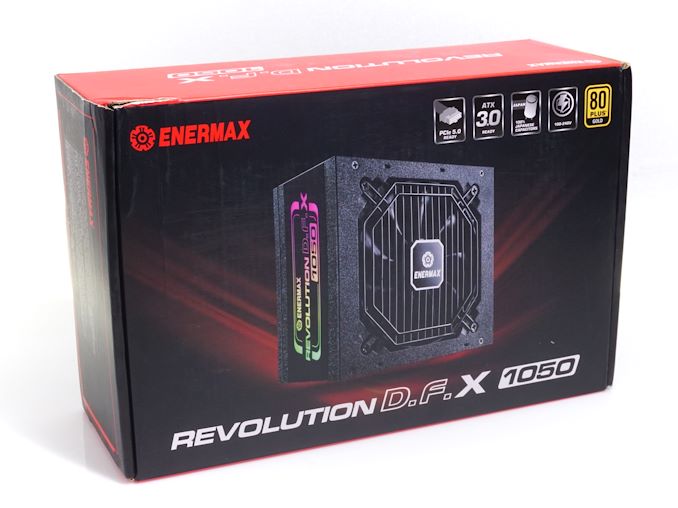

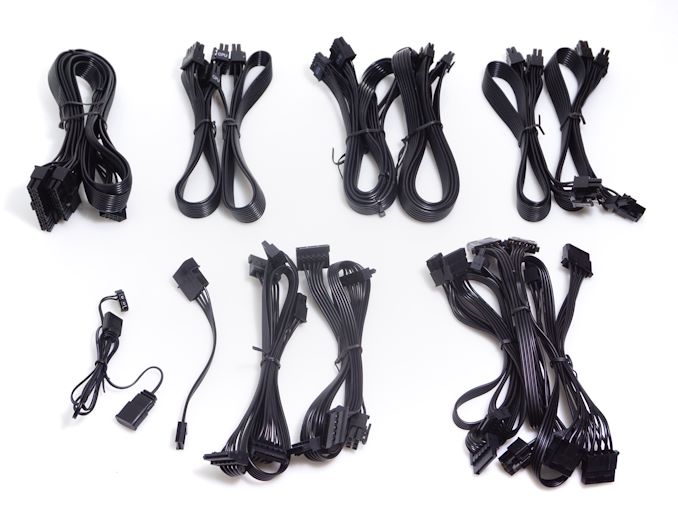
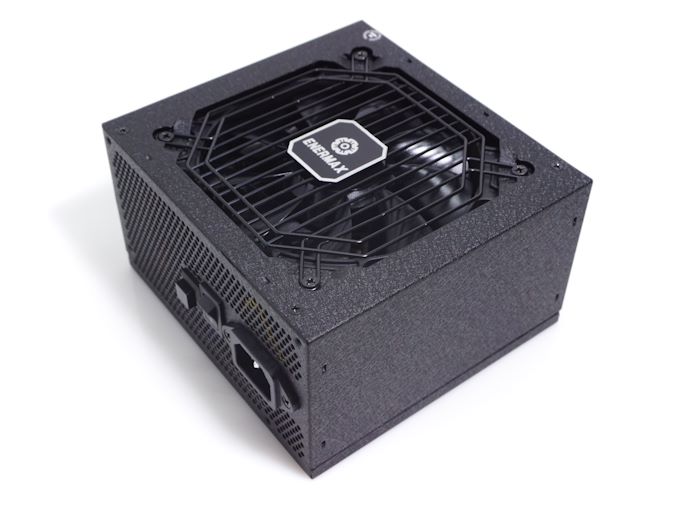
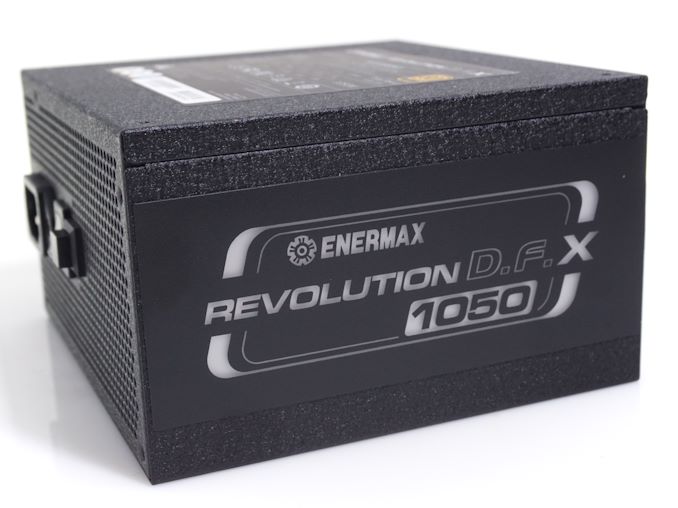

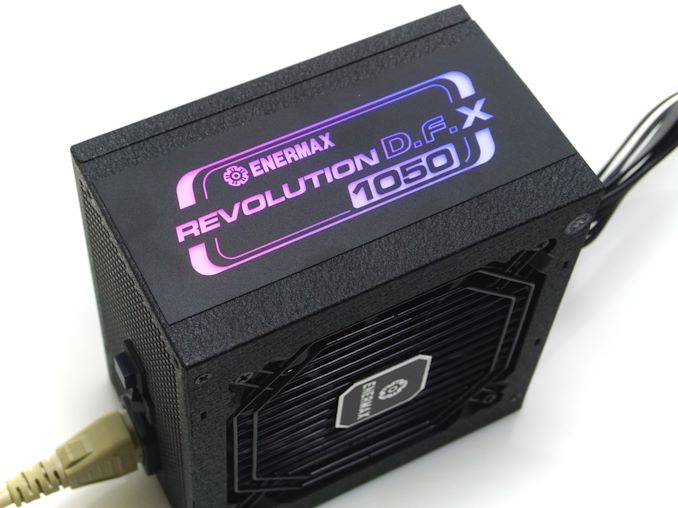
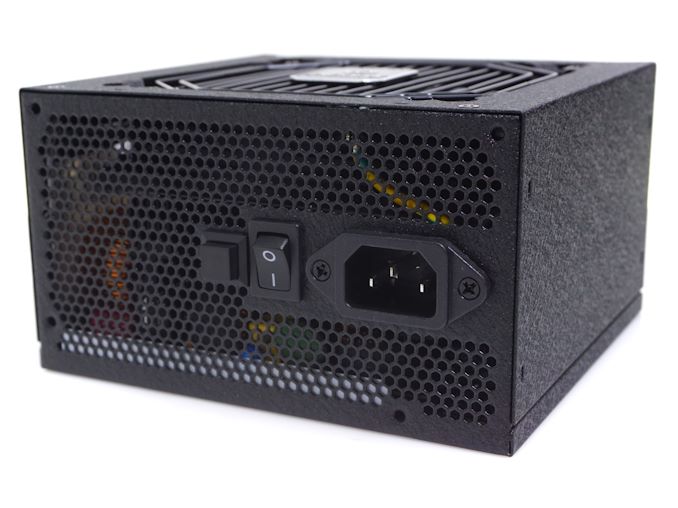
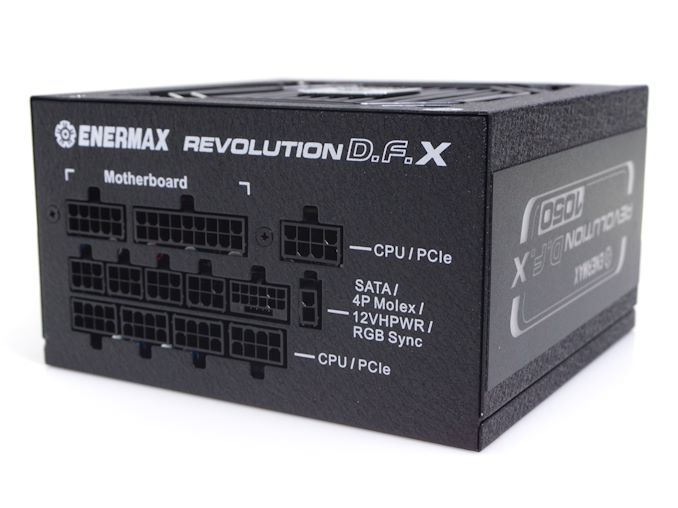
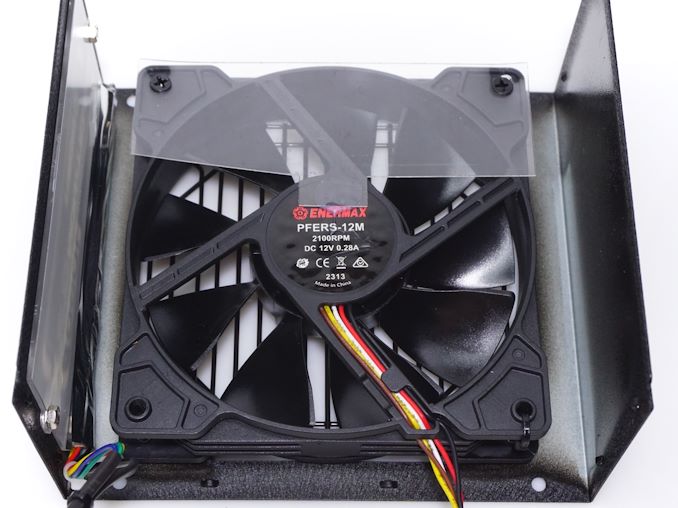
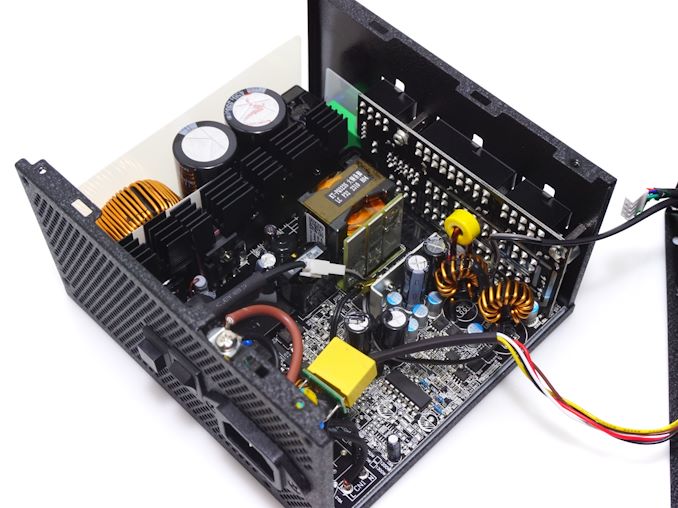
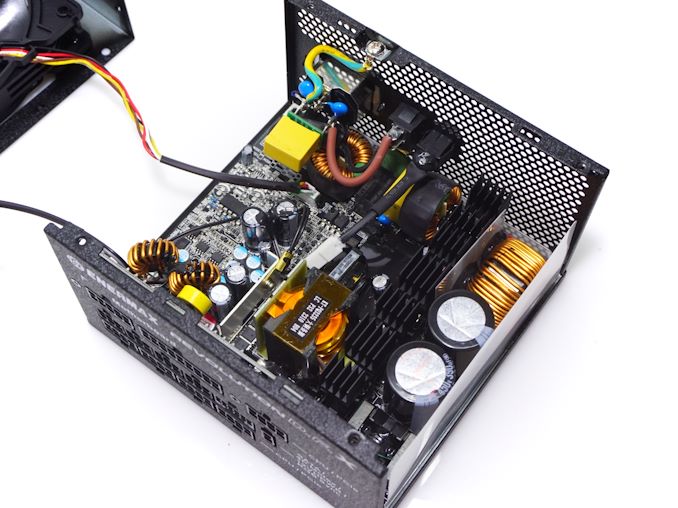
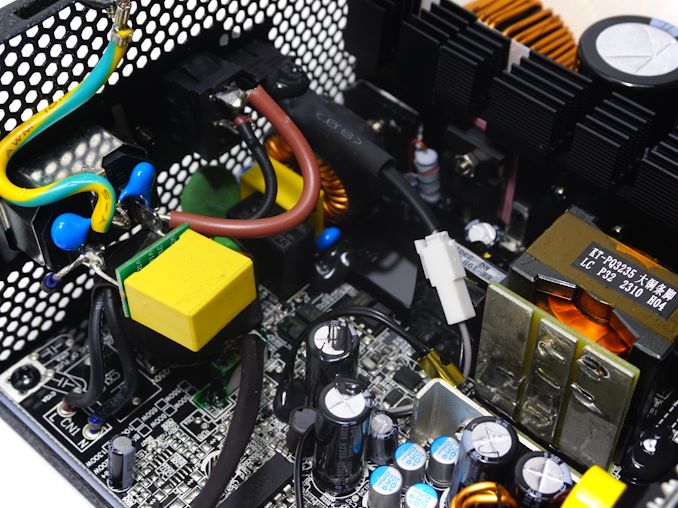
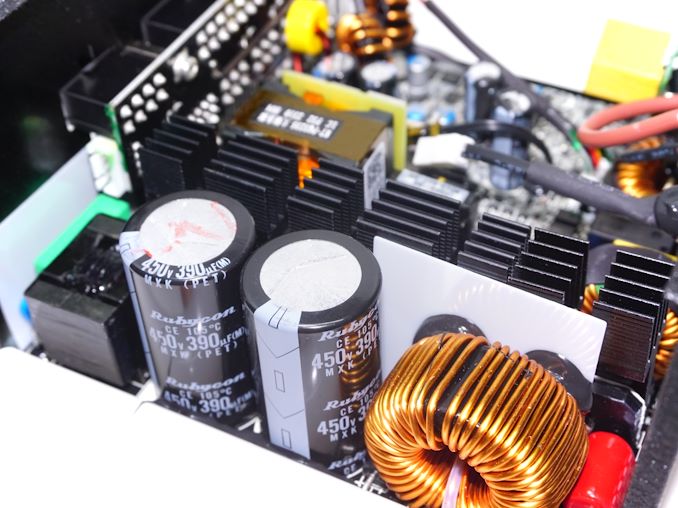
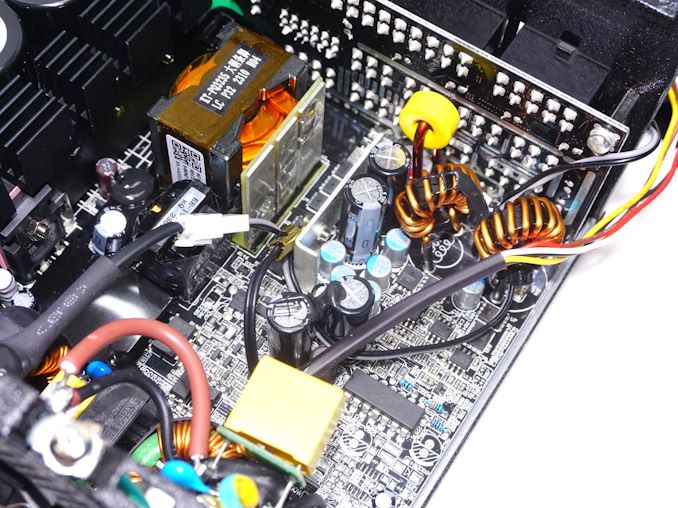








17 Comments
View All Comments
evanh - Monday, November 13, 2023 - link
The female pins are a new design. That's the most important change.The adjusted pin length is just a minor tweak, not important in any way.
E.Fyll - Monday, November 13, 2023 - link
The female - and male - pins are entirely the same.I have no idea where you picked up that nonsense, probably from some clickbait article of shorts, but, once again, the only difference is the length of the Sense pins and that is only taking place on the equipment's side too. You can read the specifications, they are publicly available. You should not be spreading misinformation.
evanh - Monday, November 13, 2023 - link
I don't know why you'd think those power pins are the same. The whole purpose of the 12V-2x6 plug even existing is to fix the overheating flawed design of the 12VHPWR plug. Having a couple of shorter signal pins ain't gonna make the slightest difference to fixing it.MamiyaOtaru - Tuesday, November 14, 2023 - link
you're sort of right. It' not really fixed. But the shorter signal pins do help ensure it is inserted all the way before it runs current. Still has deeper flaws thoughevanh - Wednesday, November 15, 2023 - link
Yes, 12VHPWR plug has deeper flaws - weak female power pins in the plug. And that is what is really being fixed with the introduction of the replacement 12V-2x6 plug.12VHPWR cables, both supplied with PSU and as adaptors, need to all be recalled and replaced with the newly introduced 12V-2x6 cables. All manufactures should be doing this immediately to stop the on-going damage to graphics cards.
Threska - Thursday, November 9, 2023 - link
"Ball-bearing engines are very reliable but not the quietest, however the PSU features a semi-passive design that will completely stop the fan while the load is low. "Doesn't look vibration isolated from chassis.
Samus - Thursday, November 9, 2023 - link
For the price it's hard to argue with these results, but I can't help but think, realistically, this should be considered an 800-watt PSU. It's capable of 1050w but it's operational sweet spot and efficiency are more in-line with 750-800w units, where continuous current will never exceed 80% load, or 600-650w. Since load is really inconsistent during most use cases (gaming, burst performance, etc) it's good to have the overhead and potential for 1000w+ but if you have a system design that often hovers around 650w load (like an RTX 4080 + i7-13700k) this is among the best candidates out there.